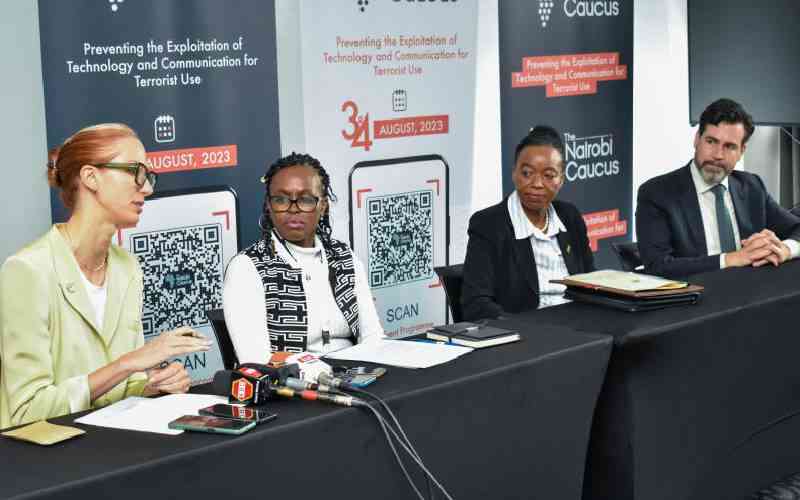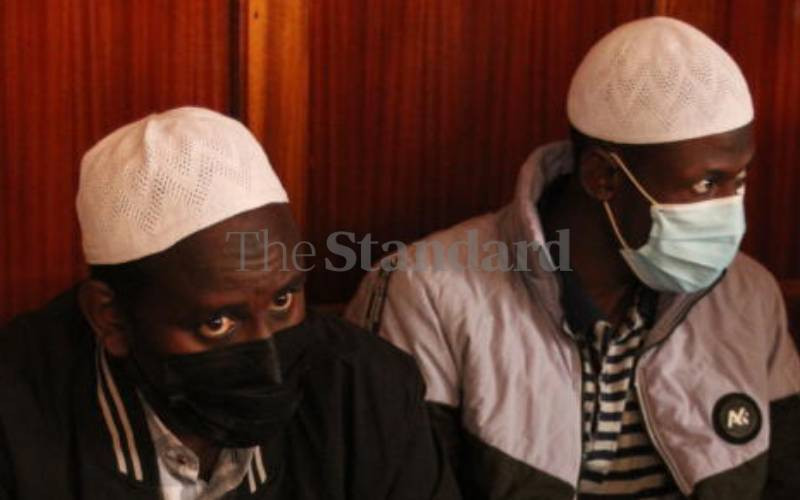He spent years in campus “chewing” electronic and nuclear physics books and giving tutorials. But ended up using the knowledge to kill 224 people in Nairobi and Dar es Salaam.
And despite his evil thoughts, he managed to get a brief political asylum in the United Kingdom.
The story of Anas Al-Liby, who died on the eve of the New Year at 50 in New York, reads like a script from a Hollywood movie.
Al-Liby, who had been on the FBI’s most wanted list for years, with a $5 million (Sh450 million) bounty on his head, succumbed to liver cancer in the United States where his terrorism trial had been on-going.
Al-Liby’s journey to terrorism commenced in the early 90s during his stay in Sudan where he met the would-be Al-Qaeda leader Osama Bin Laden.
At the time, Islamist terrorists across the world were a celebrating lot after the humiliating defeat of US forces in Mogadishu by Somali men loyal to the then self-proclaimed president, Mohamed Farrah Aidid in 1993.
Nevertheless, the terrorist networks, which were at the time assembling in East Africa, were planning retaliatory attacks against local US installations.
The FBI alleges that Al-Liby was among the people that proposed attacks on the US embassies in East Africa.
Al-Liby, who served the Al-Qaeda as a computer expert, provided visual and photographic surveillance of the Nairobi-based US embassy as early as 1993, alleges the FBI.
After the successful twin attacks in Kenya and Tanzania on August 7, 1998, Al-Liby peculiarly found his way back to the UK.
He had previously been there in 1995, having been offered asylum as a political dissenter against former Libyan leader Muammar Gaddafi.
A conspiracy theory claims that Al-Liby was one of the Al-Qaeda members involved in the assassination attempt on Gaddafi, allegedly at the behest of western governments.
But days later, police allegedly pounced on terrorism manuals in Al-Liby’s home in Manchester, prompting him to flee the country for safety.
His chance to return home to Libya came after Gaddafi was overthrown, but he was captured by a contingent of the US Delta Force soldiers in 2013 after a highly covert operation in Tripoli.
“It was very significant that he came back to Libya to what...appears was a very large, broad-scale interlinking of all the Al-Qaeda organisations in the North,” Malcolm Vance, a former US intelligence officer, told The New York Times.
Stay informed. Subscribe to our newsletter
And in October 2013, Al-Liby was charged before a New York Federal Court where he denied being a terrorist.
His lawyer Bernard Kleinman exonerated him from the alleged involvement in the 1998 bombings, claiming he was one of the many people grabbed by Nato soldiers from Tripoli.
“This case involves issues much more tinged with emotion and trauma than other cases,” Kleinman told the court in 2013.
He added: “The fact that Mr Al-Libi will be tried in New York, barely a half mile from Ground Zero, and that Osama bin Laden and Al-Qaeda will be referenced numerous times in connection with his co-defendants cannot be ignored,” the UK Daily Mail reported.
But Al-Liby died on January 2 this year after months of deteriorating health. He was suffering from liver cancer and had Hepatitis C, medics said. US Attorney Preet Bharara regretted the suspected terrorist’s death, saying: “He died despite the care provided at the hospital.”
 The Standard Group Plc is a
multi-media organization with investments in media platforms spanning newspaper
print operations, television, radio broadcasting, digital and online services. The
Standard Group is recognized as a leading multi-media house in Kenya with a key
influence in matters of national and international interest.
The Standard Group Plc is a
multi-media organization with investments in media platforms spanning newspaper
print operations, television, radio broadcasting, digital and online services. The
Standard Group is recognized as a leading multi-media house in Kenya with a key
influence in matters of national and international interest.
 The Standard Group Plc is a
multi-media organization with investments in media platforms spanning newspaper
print operations, television, radio broadcasting, digital and online services. The
Standard Group is recognized as a leading multi-media house in Kenya with a key
influence in matters of national and international interest.
The Standard Group Plc is a
multi-media organization with investments in media platforms spanning newspaper
print operations, television, radio broadcasting, digital and online services. The
Standard Group is recognized as a leading multi-media house in Kenya with a key
influence in matters of national and international interest.










